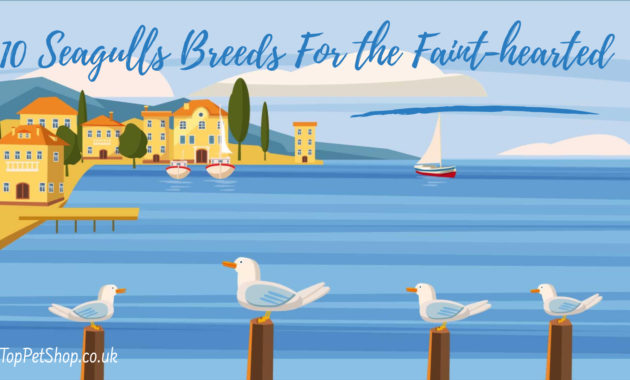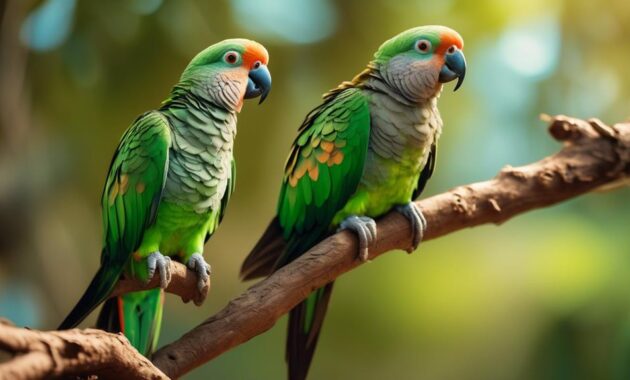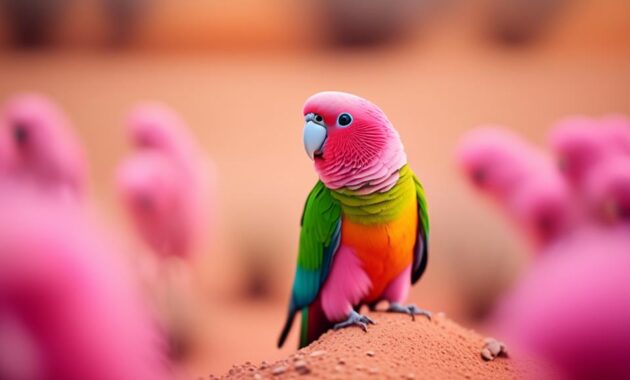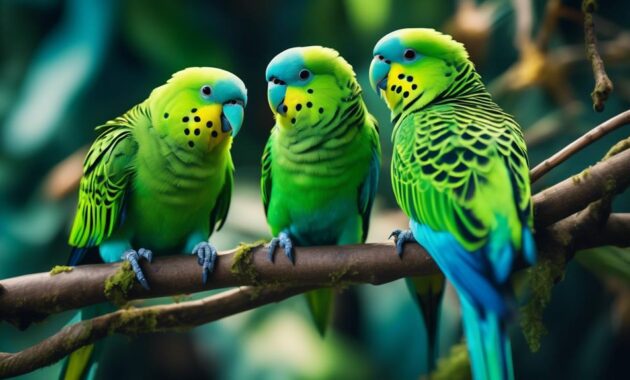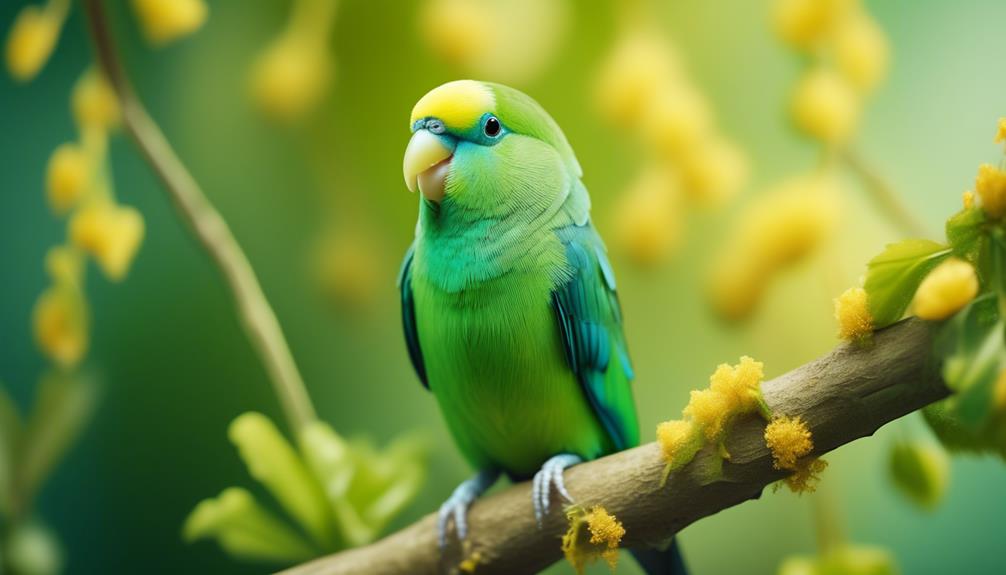
Known for its vibrant hues and captivating personality, the Green Rumped Parrotlet has earned its reputation as a colorful and charming avian companion. This diminutive bird, often referred to as ‘the pocket parrot,’ possesses a remarkable presence that captivates bird enthusiasts worldwide.
With its eye-catching plumage and endearing nature, it’s no wonder that this New World parrot has become a favorite among pet owners and bird lovers alike. But what makes this little parrot so special?
Let’s uncover the secrets behind its charm and explore the fascinating world of the Green Rumped Parrotlet.
Key Takeaways
- The Green Rumped Parrotlet is a small bird native to South America, specifically found in Trinidad, Colombia, Venezuela, Brazil, and Guianas.
- It has a visually stunning appearance, with predominantly bright green feathers. Males have blue feathers on their wings, while females have yellow shades on their heads.
- This species has a long lifespan of up to 30 years and requires proper care, including a balanced diet, regular vet check-ups, a spacious cage, and mental stimulation.
- The Green Rumped Parrotlet is known for its vocalizations, being capable mimics, word learners, and engaging in social communication through courtship calls and alarm calls.
Physical Characteristics
The Green Rumped Parrotlet, also known as ‘the pocket parrot’, is a small and charming bird with unique physical characteristics. It has an average length of 5 inches and weighs only 23 grams, making it the smallest of all New World parrots. Its chubby body and short rounded tail give it a cute and cuddly appearance.
The bird has a long lifespan, living up to 30 years, which is impressive for such a small creature. To ensure longevity, proper care and attention are required, including a healthy diet and regular vet check-ups.
Native to South America, particularly Trinidad, Colombia, Venezuela, Brazil, and Guianas, the Green Rumped Parrotlet prefers nesting in forests, farmlands, and deciduous woodlands. It’s often seen in large flocks of up to 100 birds.
Lifespan and Care
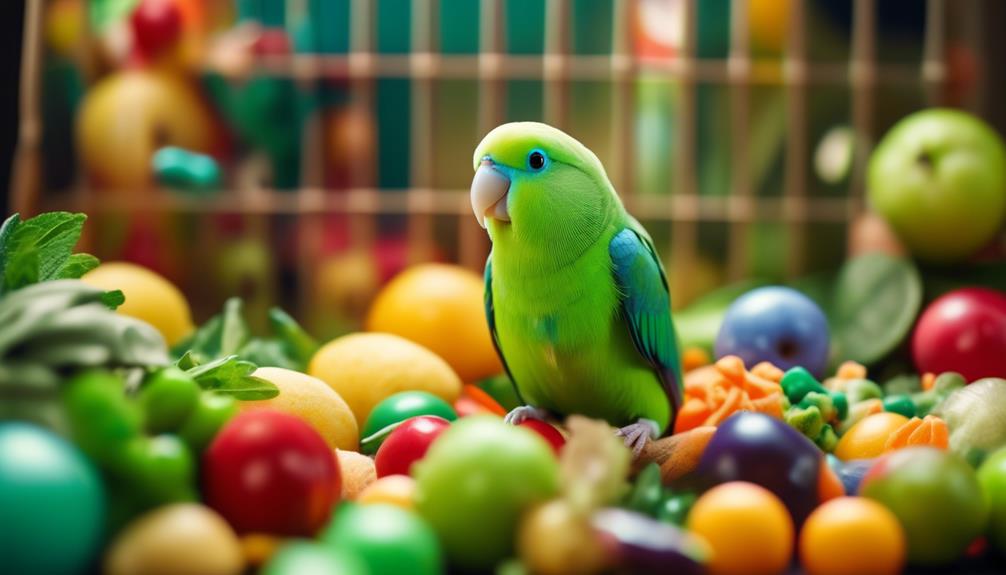
With its impressive lifespan for a small bird, the Green Rumped Parrotlet requires proper care and attention to ensure its longevity. These vibrant and charming birds can live up to 30 years when given the right care. Health and diet play a crucial role in their lifespan, so it is important to provide a balanced and nutritious diet consisting of fresh fruits, vegetables, and high-quality pellets. Regular vet check-ups are recommended to monitor their overall health and address any potential issues. Additionally, providing a spacious cage with plenty of toys and opportunities for mental stimulation is essential for their well-being. By providing the necessary care and attention, owners can enjoy the companionship of these colorful parrotlets for many years to come.
| Lifespan | Care |
|---|---|
| Up to 30 years | Balanced diet |
| Regular vet check-ups | |
| Spacious cage | |
| Mental stimulation | |
| Proper attention |
Bird Species and Habitat
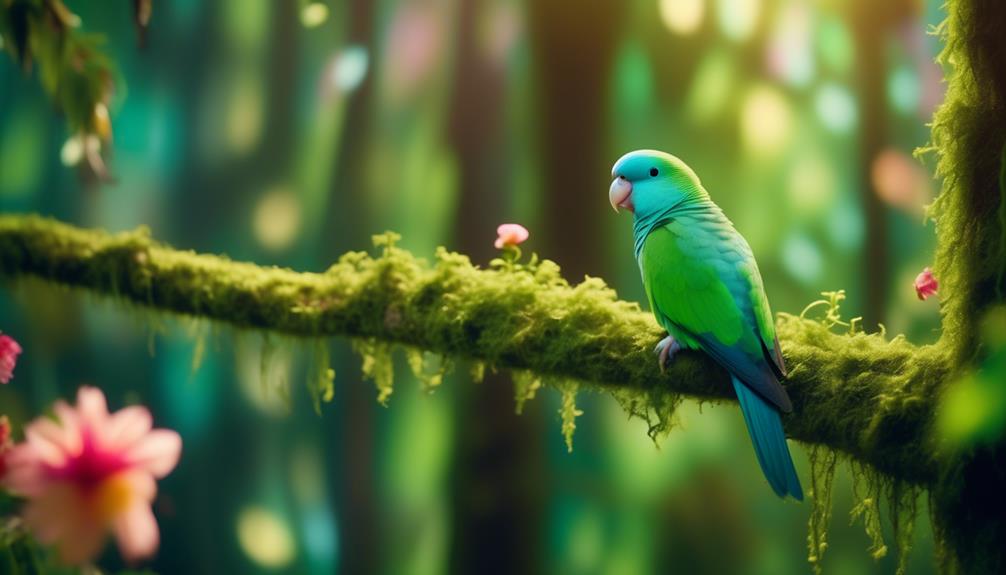
Native to South America and commonly found in Trinidad, Colombia, Venezuela, Brazil, and Guianas, the Green Rumped Parrotlet belongs to the Parrotlet family and prefers nesting in forests, farmlands, and deciduous woodlands.
This vibrant bird is often seen in large flocks of up to 100 birds, creating a spectacle of color and charm. Its adaptability allows it to thrive in various environments, making it a resilient species.
The Green Rumped Parrotlet’s preference for nesting in forests and woodlands ensures it has ample access to food sources and protection from predators. In farmlands, it can benefit from the abundance of crops and vegetation.
This bird’s ability to adapt to different habitats contributes to its widespread presence across South America.
Coloration
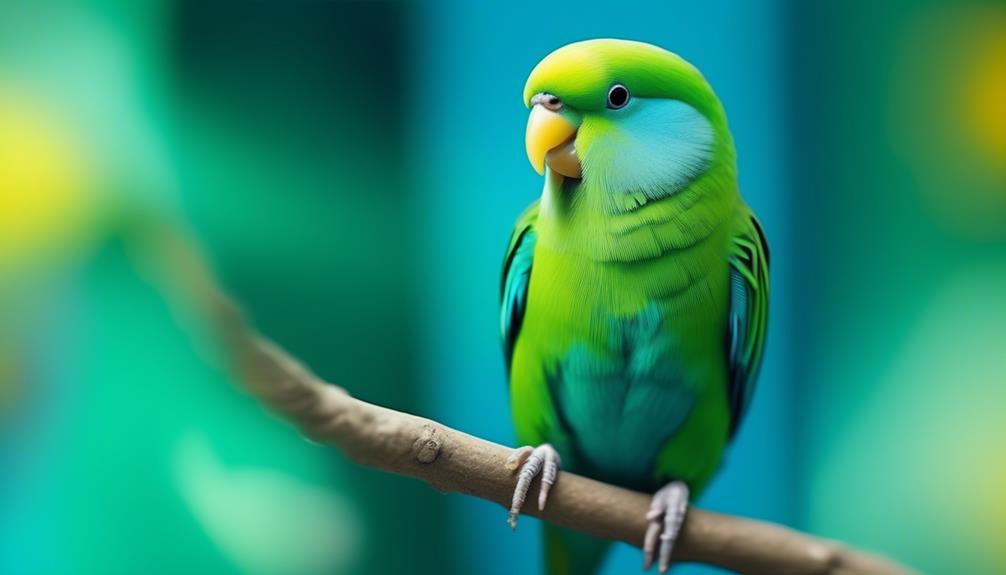
Having discussed the Green Rumped Parrotlet’s preference for nesting in forests and woodlands, let’s now explore its vibrant and eye-catching coloration.
This species is predominantly bright green, but it also exhibits sexual dimorphism. Males have striking blue feathers on their wings, adding a beautiful contrast to their green plumage. On the other hand, females lack the blue feathers but have yellow shades on their heads.
These color differences make it easier for enthusiasts to choose their preferred pet. The combination of green, blue, and yellow hues creates a visually stunning appearance, making the Green Rumped Parrotlet a truly captivating bird to observe.
Whether in the wild or as a pet, their colorful plumage is sure to catch the eye of anyone who encounters them.
Vocalizations
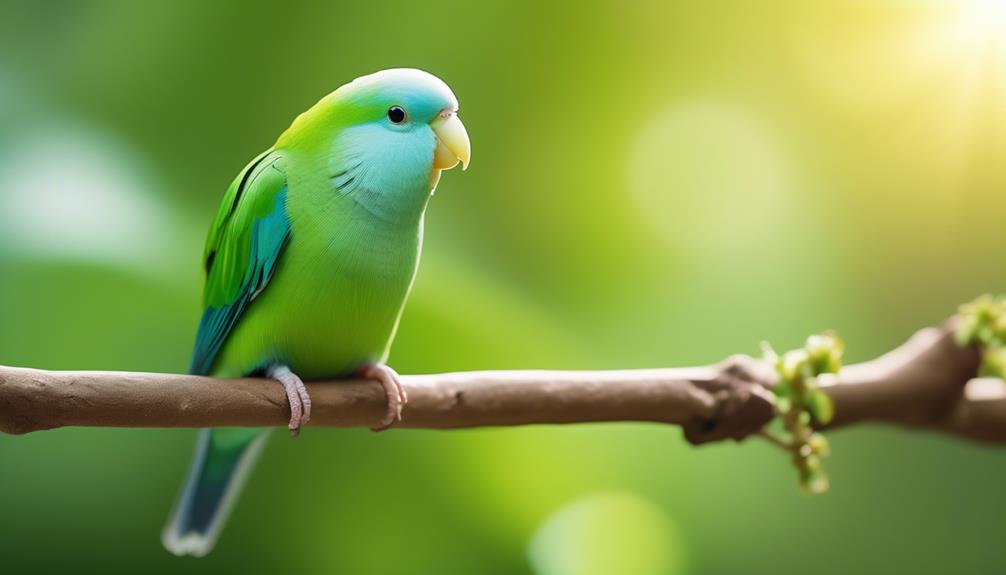
Green Rumped Parrotlets are generally quiet birds, known for their cartoonish chirps and twittering. Despite their small size, they aren’t loud or annoying. Here are five interesting facts about their vocalizations:
- Capable mimics: Green Rumped Parrotlets have the ability to imitate various sounds and voices, making them entertaining pets.
- Word learners: These parrotlets are known for their intelligence and can be trained to learn and repeat words and sounds.
- Social communication: They use vocalizations to communicate with each other, expressing their emotions and establishing their territories.
- Courtship calls: During mating season, male parrotlets use specific vocalizations to attract females and establish their bond.
- Alarm calls: When sensing danger or feeling threatened, Green Rumped Parrotlets emit warning calls to alert their flock members.
Frequently Asked Questions
How Do Green Rumped Parrotlets Communicate With Each Other in the Wild?
Green rumped parrotlets communicate with each other in the wild through a variety of vocalizations. They make cartoonish chirps and twittering sounds, and are also capable mimics that can learn and repeat words and sounds.
Are Green Rumped Parrotlets Social Birds, or Do They Prefer to Be Alone?
Green Rumped Parrotlets are social birds that prefer to live in large flocks of up to 100 individuals. While they can be independent, they enjoy the company of others and thrive in social environments.
Do Green Rumped Parrotlets Require Any Special Environmental Conditions or Temperature Ranges?
Green Rumped Parrotlets do not require any special environmental conditions or temperature ranges. They are adaptable birds that can thrive in a variety of habitats, including forests, farmlands, and deciduous woodlands.
Are There Any Specific Toys or Activities That Are Recommended to Keep Green Rumped Parrotlets Entertained?
There are specific toys and activities recommended to keep green rumped parrotlets entertained. Providing puzzle toys, swings, and foraging opportunities can help keep them mentally stimulated and prevent boredom.
Are Green Rumped Parrotlets Prone to Any Particular Health Issues or Diseases?
Green Rumped Parrotlets are not prone to any specific health issues or diseases. However, like all birds, proper care and attention, including a balanced diet, regular vet check-ups, and a clean environment, are important for their overall well-being.
What Makes the Green Rumped Parrotlet Different from the Blue Winged Parrotlet?
The Green Rumped Parrotlet is distinguishable from the Blue Winged Parrotlet by its vibrant green feathers and smaller size. While the Blue Winged Parrotlet has distinct blue feathers on its wings, the Green Rumped Parrotlet is known for its unique green coloration. Discover the blue winged parrotlets world and the differences between these two beautiful bird species.
Conclusion
In conclusion, the Green Rumped Parrotlet is a captivating bird with its colorful plumage and endearing personality. Despite its small size, it has a long lifespan and can be a delightful pet with proper care and attention.
Its vibrant green plumage and additional touches of blue or yellow make it visually appealing and easy to distinguish between males and females. With their mimicking abilities, these parrotlets can add a charming and entertaining aspect to any bird enthusiast’s life.

